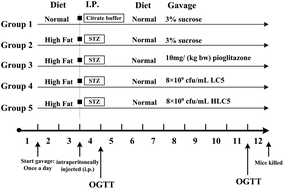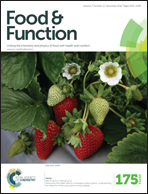A comparative study of the antidiabetic effects exerted by live and dead multi-strain probiotics in the type 2 diabetes model of mice
Abstract
Type 2 diabetes is a metabolic syndrome characterized by insulin resistance and relative insulin deficiency. In this study, the anti-diabetic effects of live and dead multi-strain probiotics were explored and compared in a high-fat and streptozotocin-induced model of type 2 diabetes in mice. Either live or dead probiotics were daily administered orally to the mice over 10 weeks. Both live and dead multi-strain probiotics reduced HbA1C and leptin levels, improved glucose tolerance, and protected against the impairment of the pancreas, while the live probiotic showed a greater ability to reduce fasting and postprandial blood glucose levels. In addition, the live multi-strain probiotic exerted the beneficial effect of ameliorating insulin resistance. This effect was associated with the gut microbiota, butyrate production, and the inflammatory response, and was more effective for the live probiotic than the dead probiotic. These findings showed that the viable probiotic more effectively relieved hypoglycemic symptoms in the host by ameliorating insulin resistance. Furthermore, a pathway related to insulin resistance, i.e., the gut microbiota–butyrate–inflammatory axis, provided a promising rationale for further research into preventing or treating type 2 diabetes.


 Please wait while we load your content...
Please wait while we load your content...